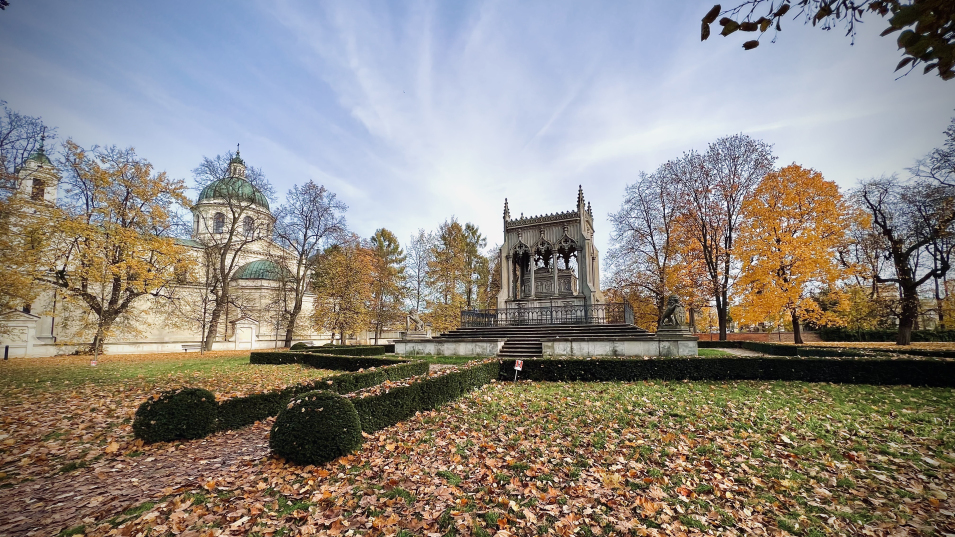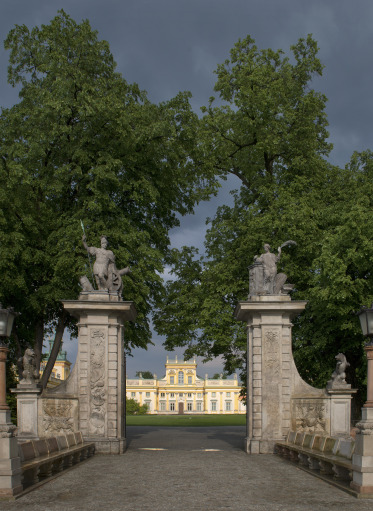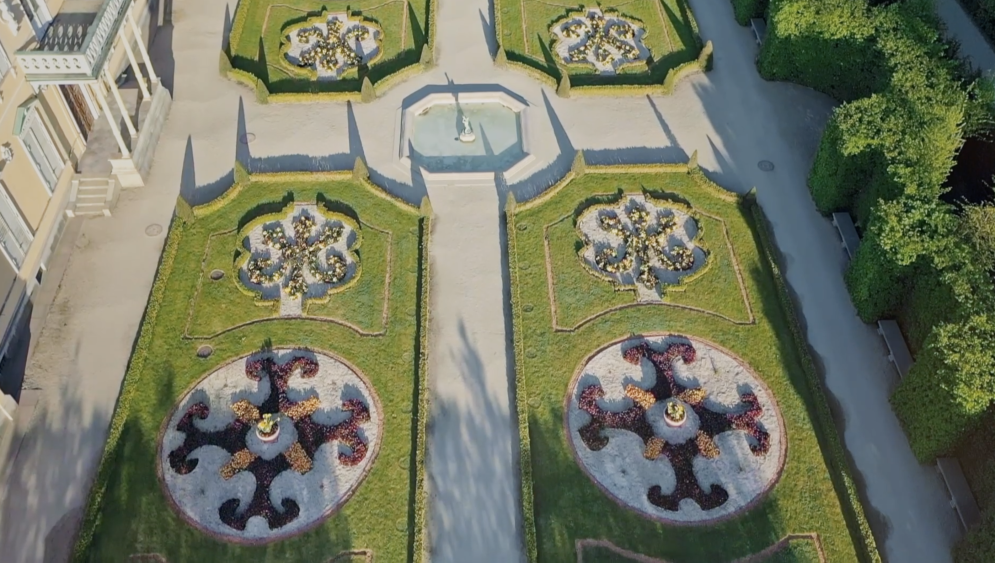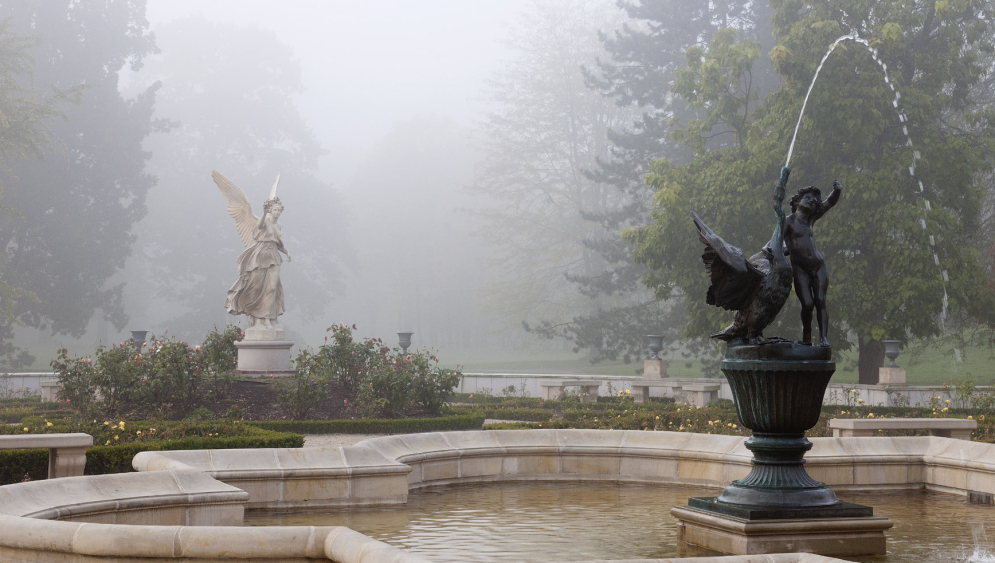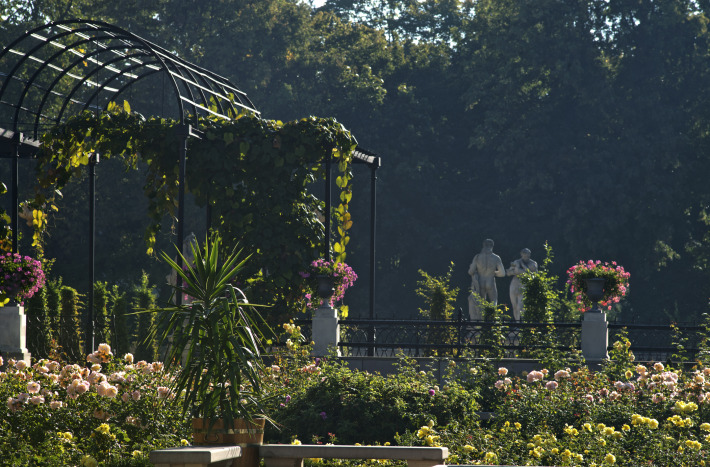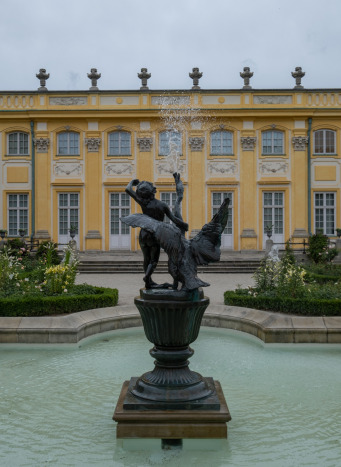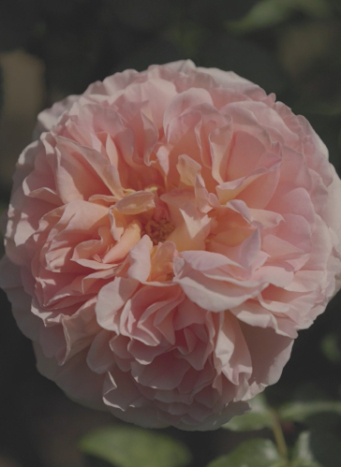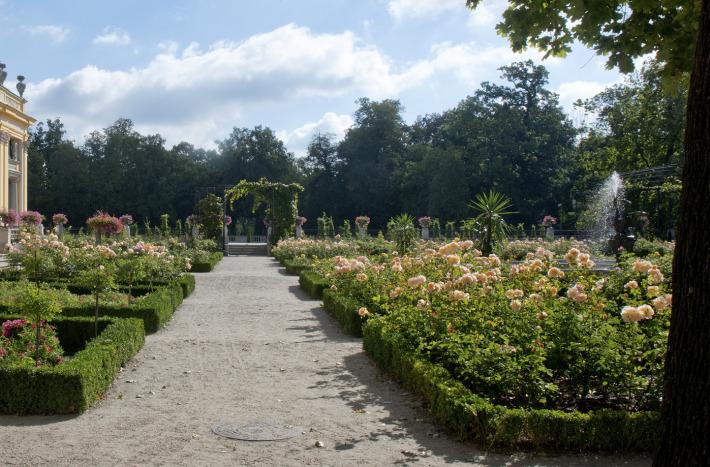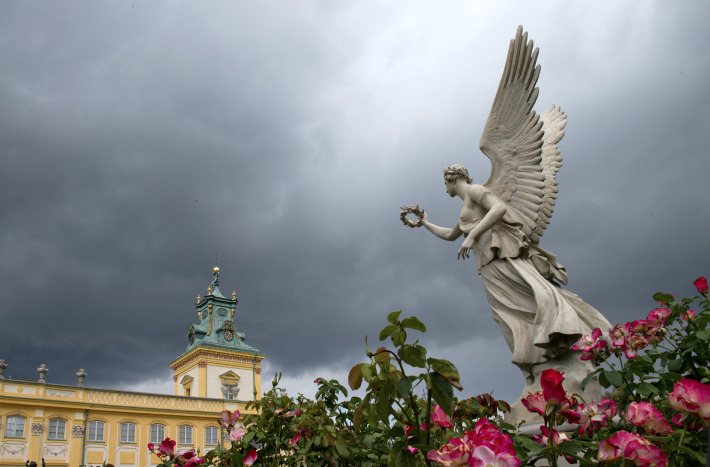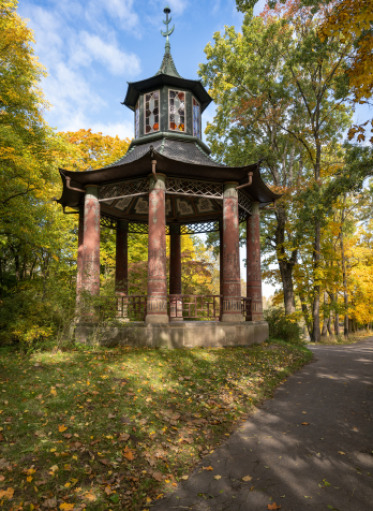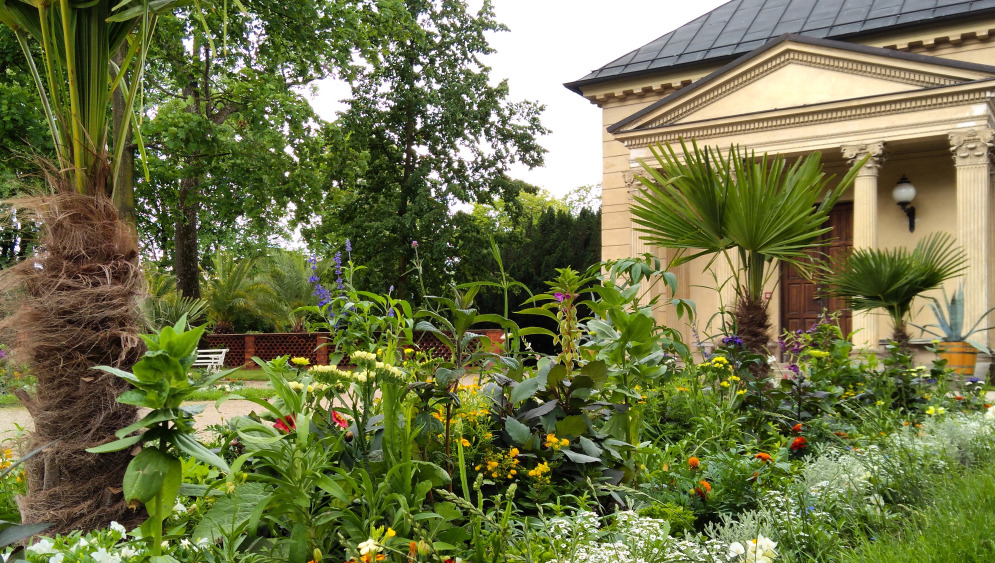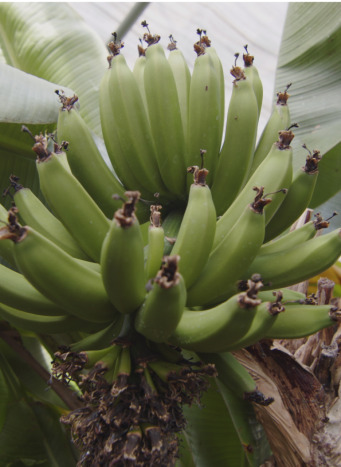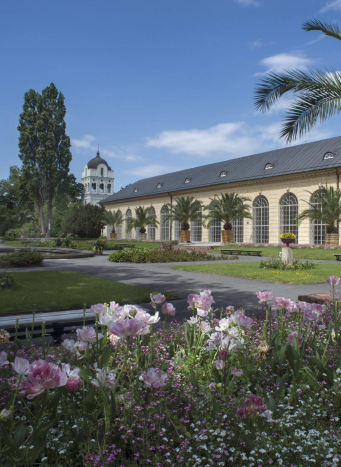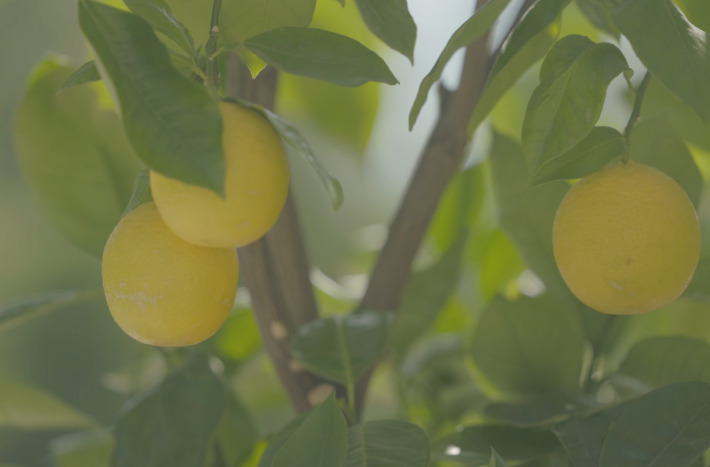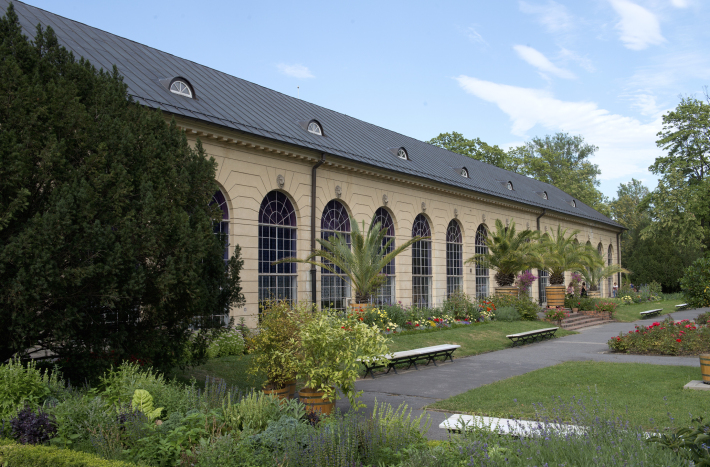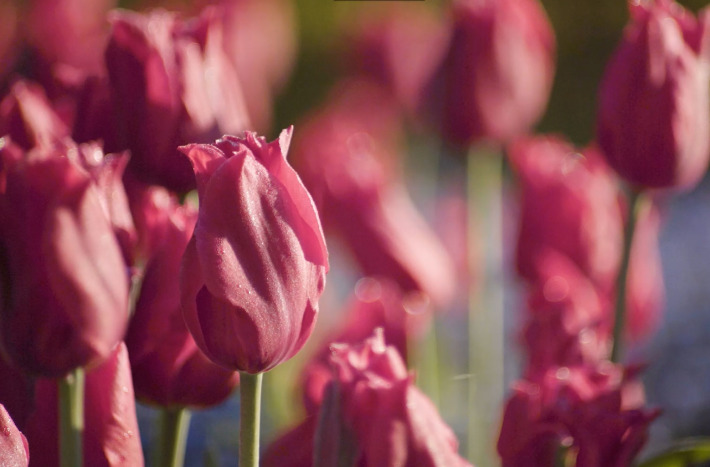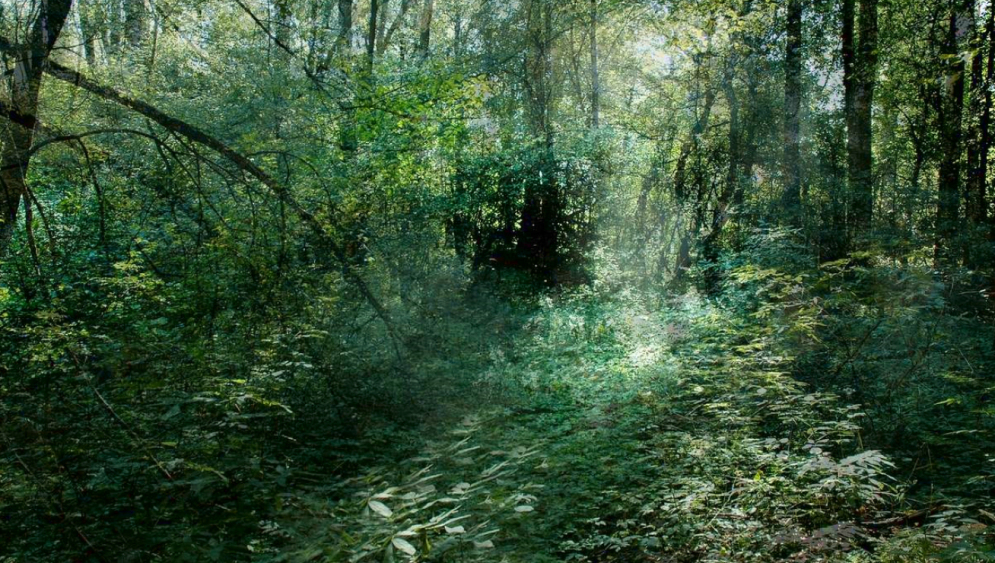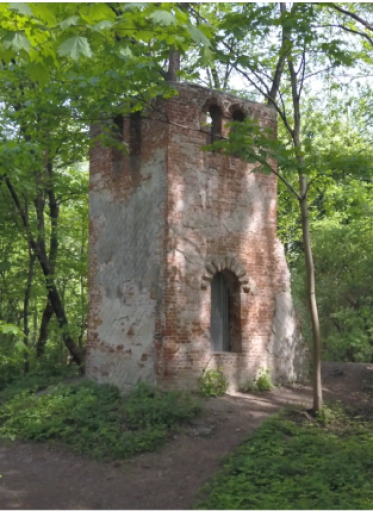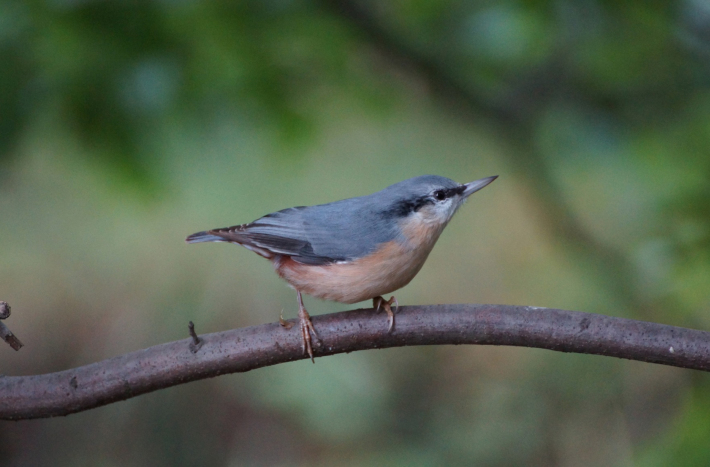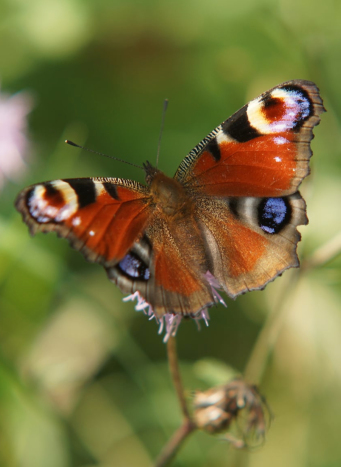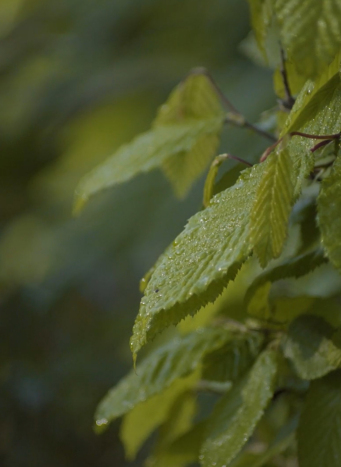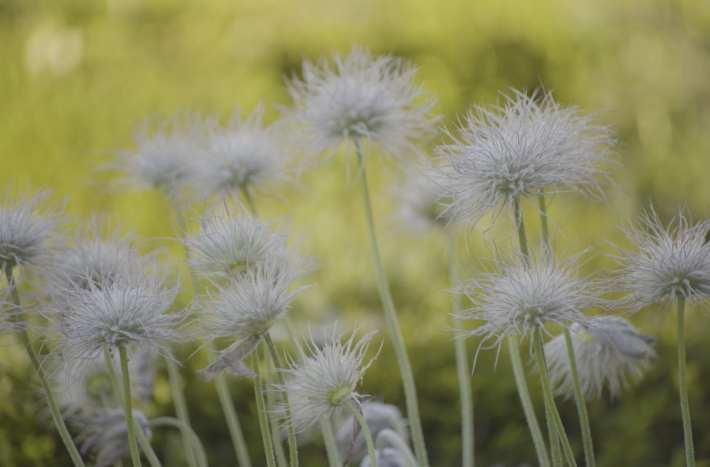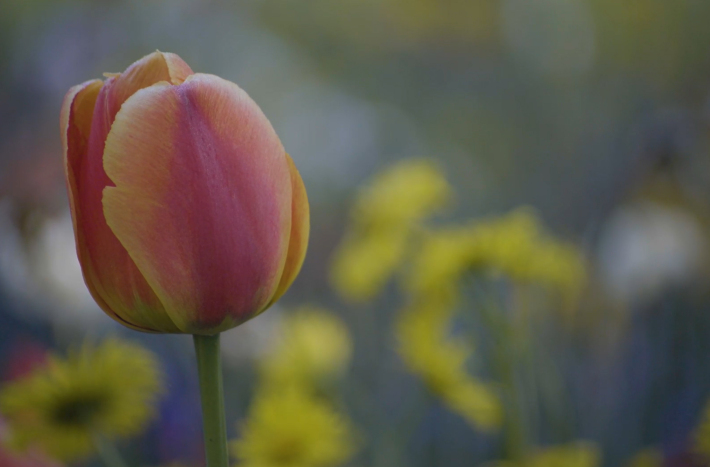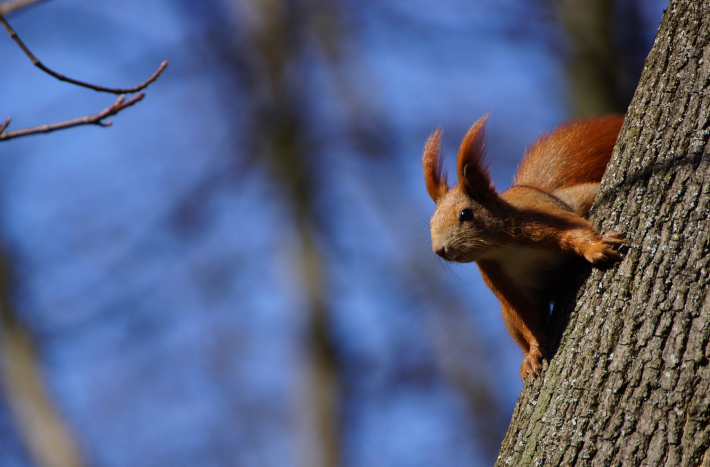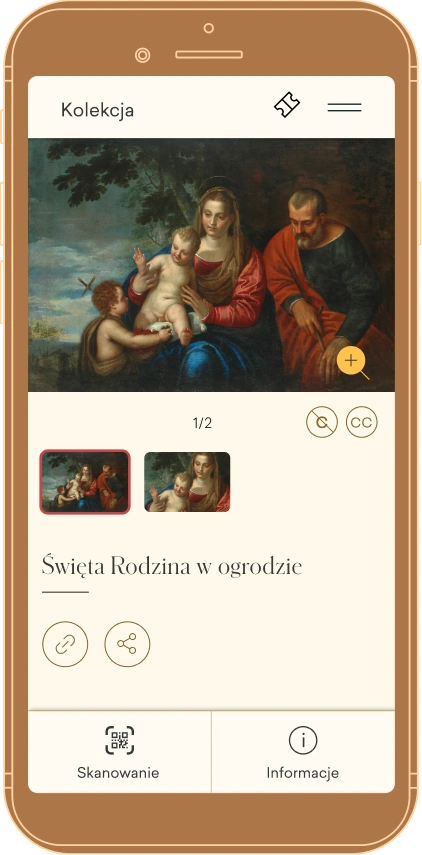The Foreground
The area in front of the Palace courtyard consists of four quarters surrounded by a brick-ceramic wall and planted with rows of trees. There is a symbolic tomb, the Potocki family mausoleum, a Caretaker's House (currently Museum ticket office), the Lanci House, and Szenicówka (currently Villa Intrata). The courtyard is preceded by a moat with a brick wall and a Baroque gate with stone figures of Mars and Venus, symbolising war and victory.
The Courtyard
Originally the Courtyard was divided into two parts: an entrance section (utilitarian) and the parade courtyard, directly adjacent to the Palace. In the 19th century, this space was merged and decorated with an oval lawn surrounded by an access road. Ancient magnolias and small-leaved linden trees form a unique decoration of the Courtyard. The main entrance to the gardens leads through a stone pergola with a gate welcoming guests with a quote from Horace: Ducite solicitae quam iucunda oblivia vitae. Forget about everyday worries and relax in the garden!
The North Garden
A regular layout of quarters is surrounded by low hedges of beech, filled in with lawns, conical yews, and flowers. The central point of the garden is a fountain topped with a figure of the mythical young Triton. In the western part of the garden is the Grove of Akademos, a place for rest and reflection. Behind the statues of Jan Kochanowski and Franciszek Karpiński, poets celebrating the charms of village life, there is an oval square surrounded by a semicircular stone bench, drawing from "whisper benches" for its shape.
The Baroque Garden
-
The Upper Terrace
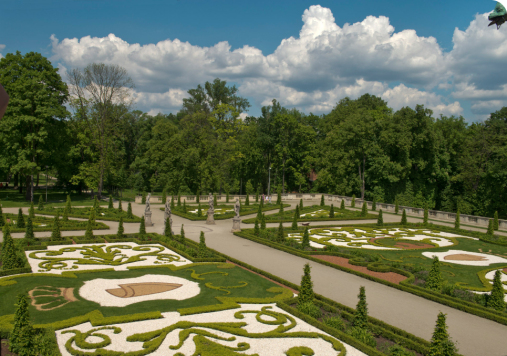 This part of the garden consists of sixteen quarters surrounded by hedges of beech and decorated with flower borders, hornbeam trimmed into conical shapes, and ornamental features of beech and coloured chipped rock. Among the plants grown here, visitors can find species typical of the Baroque era: peonies, pasque flowers, daffodils, tulips, bellflowers, asters, lilies, and larkspur. In summer, the Baroque composition is complemented by flowering and fruiting citrus trees and exotic plants in white-green pots.
This part of the garden consists of sixteen quarters surrounded by hedges of beech and decorated with flower borders, hornbeam trimmed into conical shapes, and ornamental features of beech and coloured chipped rock. Among the plants grown here, visitors can find species typical of the Baroque era: peonies, pasque flowers, daffodils, tulips, bellflowers, asters, lilies, and larkspur. In summer, the Baroque composition is complemented by flowering and fruiting citrus trees and exotic plants in white-green pots.
-
The Lower Terrace
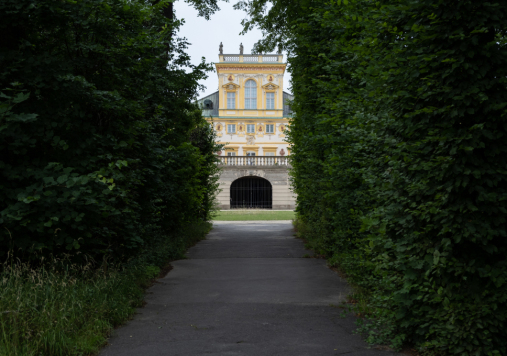 This garden also refers to Baroque forms. Four geometric quarters are decorated with conically trimmed yews and floral borders. The whole is closed by a bosquet, a compact array of trees enclosed in trimmed walls of trellises. Regularly interspersed with alleys, they provide views of Wilanowskie Lake and create secluded garden nooks. A wide promenade runs along Wilanowskie Lake , offering a picturesque view of the opposite shore.
This garden also refers to Baroque forms. Four geometric quarters are decorated with conically trimmed yews and floral borders. The whole is closed by a bosquet, a compact array of trees enclosed in trimmed walls of trellises. Regularly interspersed with alleys, they provide views of Wilanowskie Lake and create secluded garden nooks. A wide promenade runs along Wilanowskie Lake , offering a picturesque view of the opposite shore.
-
Sculptures
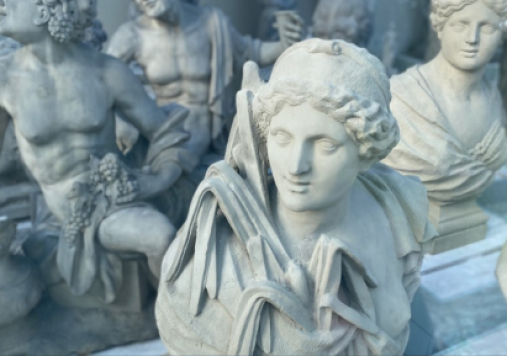 The garden is decorated with numerous sandstone sculptures depicting mythological heroes. Worth a look are the particularly valuable Rococo figures by Johann Chrisostomus Redler, situated on the Upper Terrace balustrade. These figures depict putti symbolising the four stages of love (Apprehension, Kiss, Indifference, and Quarrel), exotic sphinxes with baskets of flowers and allegories of the four seasons.
The garden is decorated with numerous sandstone sculptures depicting mythological heroes. Worth a look are the particularly valuable Rococo figures by Johann Chrisostomus Redler, situated on the Upper Terrace balustrade. These figures depict putti symbolising the four stages of love (Apprehension, Kiss, Indifference, and Quarrel), exotic sphinxes with baskets of flowers and allegories of the four seasons.
„Ducite solicitae quam iucunda oblivia vitae”
This Latin quote from Horace welcomes visitors into the Palace garden. It encourages one to forget about the daily worries of life and rest among nature. Ready to relax among the flowers?
The Rose Garden
An intimate garden filled with historic varieties of English and French roses, in warm pastel shades. The sculptured decor comprises a ceramic statue of Victory and four allegorical sculptures, Harmony, Beekeeping, Farming and Fishing, crowning the pillars of the gate to the South Landscape Park as well as a centrally located fountain topped with a figure of a boy with a swan.
The Rose Garden - gallery
The South Landscape Park
-
Mount Bacchus
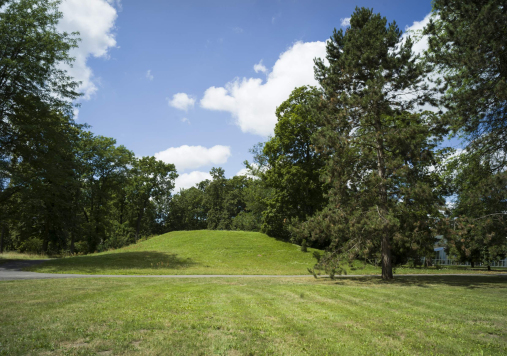 Preserved from the time of King Jan III, Mount Bacchus is an excellent vantage point from which visitors can admire the entire Park. On the south side, the Park is adjoined by the buildings of the grange: the Vice-Starosta's House and the Dutch House, near which the flower meadow has been established. In the clearings grow the oldest stately trees in Wilanów Park, mostly oaks, some over 200 years old.
Preserved from the time of King Jan III, Mount Bacchus is an excellent vantage point from which visitors can admire the entire Park. On the south side, the Park is adjoined by the buildings of the grange: the Vice-Starosta's House and the Dutch House, near which the flower meadow has been established. In the clearings grow the oldest stately trees in Wilanów Park, mostly oaks, some over 200 years old.
-
The English-Chinese Garden
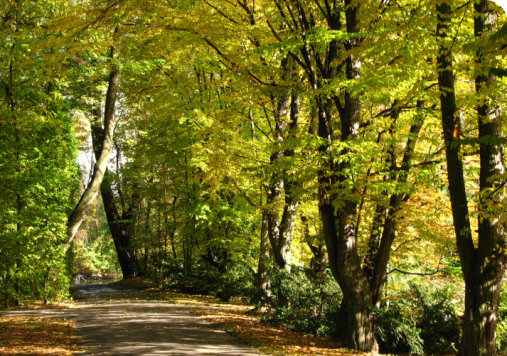 A picturesque English-Chinese garden from the end of the 18th century takes advantage of the varied terrain. Freely wandering paths and plantings of trees and shrubs were meant to give the impression of an idealised imitation of nature. Several decades later, this garden was enlarged and transformed by Stanisław Kostka Potocki into a landscape park, which can be admired to this day.
A picturesque English-Chinese garden from the end of the 18th century takes advantage of the varied terrain. Freely wandering paths and plantings of trees and shrubs were meant to give the impression of an idealised imitation of nature. Several decades later, this garden was enlarged and transformed by Stanisław Kostka Potocki into a landscape park, which can be admired to this day.
The North Landscape Park
The buildings of the North Landscape Park, built in different styles, were intended to transport guests to distant times and places, such as the Pump Room reminiscent of a medieval castle, the Chinese Gazebo, or the Roman Bridge and the Battle of Raszyń Monument, which imitate ancient architecture, situated on the artificially formed North Island. The buildings, composed in the greenery of the garden, give the whole a romantic aura.
The Orangery Garden
This is the youngest part of Wilanów. During the reign of King Jan III, there was a wooden church and a cemetery here. The quarters adjacent to the Orangery were planted with red roses and hostas. The space around was decorated with exotic plants in pots, which are brought here every summer, such as Canary date trees, Howea forsteriana palms, bananas, and figs.
The Orangery Garden - gallery
The Morysin Nature Reserve
The name of the reserve comes from the name of the grandson of Stanisław Kostka Potocki, Maurycy, also called Moryś. The extensive system of watercourses and architectural and sculptural fittings have been erased over the years, most of them without a trace. However, a valuable habitat has been preserved, since 1996 protected by law as a nature reserve.
Traces of Ancient History
Among the thickets of trees one can find traces of ancient history – the ruins of a rotunda of the Palace from 1811 designed by Stanisław Kostka Potocki and Christian P. Aigner, the remains of the Caretaker's House, designed by Francesco Maria Lanci, and a well-preserved wooden forester's lodge.
Life in the park and gardens
The Wilanów Grange
The Grange, the former farm supporting the royal residence, part of the landscape setting of the Palace and garden in Wilanów, was purchased by the Museum in 2018. After carrying out the necessary renovations, educational activities will be developed here.
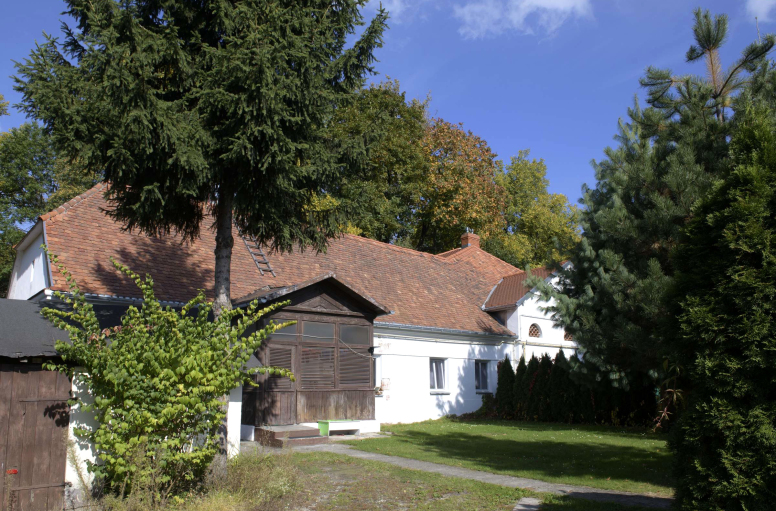
Different ways
to visit
with audio-guide
Rent an audio guide to explore the Palace at your own pace. Discover the history of the residence of King Jan III and the historic interiors. Hear about the most interesting exhibits and former inhabitants of the Palace.
with an educator
Choose a topic that interests you, invite family or friends and make an appointment for a walk or lesson with an educator. Listen to engaging stories, use educational materials and ask the questions that interest you.
individually
Take a leisurely stroll through the Royal Apartments, the Chinese Rooms and Hunting Rooms, and the Open Storage Gallery. Feel the atmosphere of the royal residence and marvel at the works of art and artistic crafts.
with a tour assistant
The tour assistant is a mobile application – scan QR codes from information plaques to learn about the history of the interiors and the symbolism of their decoration and the value of the works of art presented at the exhibitions.
The tour assistant will also help you plan your visit to the Museum: you can easily find opening hours, and buy a ticket or a souvenir.
